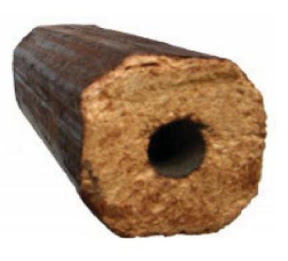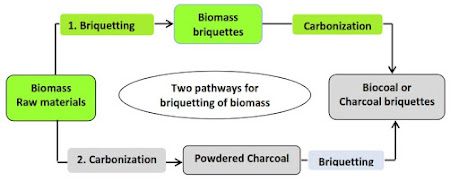The production of biodiesel or fatty acid methyl ester (FAME) is commonly heard by us and now the product has been used as a mixture of diesel fuel such as B20 and called biosolar. Recorded biodiesel production made from CPO in Indonesia has reached more than 2.5 million tons / year which also means the largest in Asia. For the biodiesel production to be economical, it should use cheap materials such as low grade CPO or high FFA CPO or PAO (Palm Acid Oil). With a high level of acidity on CPO, it cannot be directly used in diesel engines (internal combustion engines), especially diesel vehicles. But diesel engines for
power plants can operate directly with CPO even to certain acidity levels. But if the acidity level is too high as in PAO, it also cannot be directly used so it needs to be converted into biodiesel or reduced its acidity to be used by the diesel engine. Standard quality CPO has a FFA of less than 5%, while low grade CPO or high FFA CPO is more than 5%. Standard CPO is for edible oil, while high FFA CPO is not for non-edible oil, but there is no clear grouping in Indonesia about it.

While CPO production for gasoline production (bio-gasoline) is something new, as well as the production of liquid bio-petroleum gas (LBG) or LPG versions of this CPO (green LPG). Although both through chemical processes but the chemical process for the production of biodiesel with bio-gasoline and LBG is different. Biodiesel production uses a transesterification or estrans (esterification and transesterification) process while bio-gasoline and LBG are processed with co-processing technology which is currently produced at the Residue Fluid Catalytic Cracking Unit (RFCCU) facility at the Pertamina Plaju refinery in Palembang, South Sumatra. Not 100% of the gasoline produced comes from CPO but there is a fossil fuel content in it.

The CPO produced from palm oil mills also cannot be directly used for the production of bio-gasoline but must be processed first in the purification unit so that it becomes Refined Bleached Deodorized Palm Oil (RBDPO) or CPO which has been cleaned from sap and odor. The production of bio-gasoline and LBG with CPO raw materials and will be commercially developed at other Pertamina refineries if it turns out the process is economical. Pertamina said that with the process, the country would save 160 million dollars from importing crude oil. In the production of bio-gasoline in addition to the above process, there are actually already popular methods of fermentation from raw materials of sugar, starch and lignocellulose biomass. The lignocellulose biomass with gasification route followed by Fischer-Tropsch can also be used for bio-gasoline production without even the need to mix with fossil fuels. The bio-gasoline production process in the last ways will be discussed later. Insha Allah.
 |
| Residue Fluid Catalytic Cracking Unit |

In the energy sector, especially Indonesia's petroleum fuel oil, it is predicted that in the next 10 years it will run out. So with this matter that CPO as a fuel or a substitute energy source for petroleum fuel is very important and is of concern to all parties. Moreover, Indonesia is also the largest CPO producer in the world, which is 38.17 million tons or 41.98 tons in total with palm kernel oil (PKO) in 2017. Brazil is the largest producer of bio-gasoline (bioethanol) in the world because it is also the largest sugar producer with sugar cane plantations reaching 9 million hectares, the question is Indonesia with the largest CPO producing country and its 12 million hectare plantation area is also able to become the biggest producer of biofuels (biodiesel and bio-gasoline)? The use of CPO for the production of fuel (energy) is very likely to be prone to conflict with the use of human food. In these conditions, of course, the food problem is prioritized over energy, for more details can be read
here. America has been in conflict with Mexico because corn production has been prioritized for the production of bioethanol (bio-gasoline) while Mexico, which normally imports from America for food, has a shortage of corn supply and has resulted in Tortilla riots. This becomes an expensive lesson so we do not want repeat.
With 38.17 million tons of CPO production, the use of the food sector, especially cooking oil by 3-5% (equivalent to approximately 2 million tons), other sectors namely CPO derivative products such as oleochemical 3.8 million tons / year then the energy sector namely biodiesel 2,5 million tons, export 70% (equivalent to approximately 27 million tons) so there are still 2.87 million tons which can be processed into bio-gasoline (green gasoline). Another thing that needs to be addressed is that Indonesia should not export raw materials to other countries such as CPO so that its exports should be at least semi-finished goods and even better in the form of finished goods. The structure or pattern of Indonesia which still exports a lot of raw materials for other countries indicates that it is a developing country. Export CPO should be minimized but export of CPO derivative products such as biofuel and oleochemicals that still need to be improved. As a comparison, of the export percentage of biofuels, especially biodiesel and oleochemicals in Malaysia, it is greater than its CPO, while Indonesia's exports are mostly in the form of CPO. This is also because processing CPO into derivative products is still not widely done in Indonesia.

If we think more deeply that the above matters further prove the truth of the words of Allah SWT, namely in the Qur'an Surat Yaasiin (36): 80 and Surat Waqi'ah (56): 71-72 about fire (energy) from a green tree. The facts above show that from tree species as a producer of various energy sources. Even as an oil-producing tree, palm oil production is the highest of various other plants. If palm oil is produced of oil products for biofuels, namely liquid and gas fuels, while from woody trees such as calliandra,
wood pellets can be produced which are solid fuels. The things above have proven that really the energy source comes from trees in the form of liquid fuels, solid fuels and gas fuels, even with the electrochemical mechanism of the trees can also produce electricity, read more
here. Additional information on the development of Al-Qur'an-based energy can be read
here. Lamb farming is also very well integrated with palm oil plantations because it reduces and even eliminates dependence on chemical fertilizers for more details
here. The clue from Allah SWT which accompanies of planting the tree is grazing among the trees, namely in the Qur'an Surat An-Nahl (16): 10-11, A'basa (80): 24-32 and QS Thaahaa (20) : 54).























































